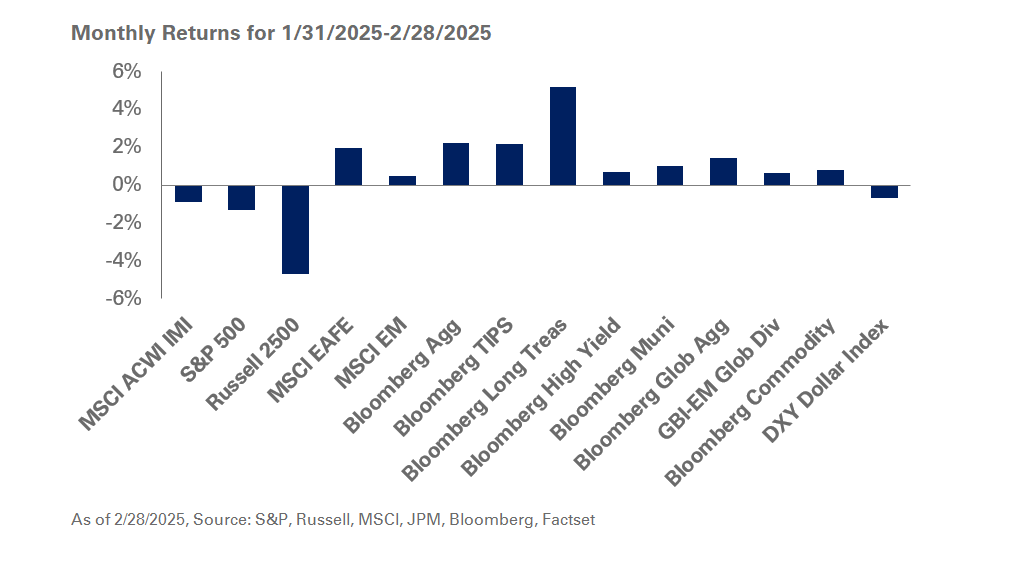Global Equities
Stocks struggled in the first quarter as investors grappled with inflation, higher interest rates and heightened geopolitical risks amid Russia’s invasion of Ukraine. U.S. large-cap stocks were in the red with the S&P 500 Index losing 4.6%. Outside the United States, international developed market equities and emerging market stocks fared worse, with the MSCI EAFE Index down 5.9% and the MSCI Emerging Markets Index losing 7%. In general, large cap outperformed small cap (except in emerging markets), and value beat growth.
Inflationary trends in real assets—energy, metals, materials and food—bolstered stocks in the value space, especially in the energy sector; higher interest rates buoyed performance within financials.
In hedge funds, long/short equity funds were down 3.9% for the three months ended March 31. During this period, healthcare and technology funds saw large declines, while growth hedge funds underperformed value hedge funds. Equity market neutral and energy/basic materials hedge funds led performance with gains of 0.4% and 4.2%, respectively.
Meanwhile, global private equity fundraising totaled $172 billion in the first quarter, according to data from Preqin, modestly lower than the $180 billion raised in the prior quarter.
After a record-setting 2021, U.S. private equity deal activity—confirmed and estimated—was muted in the first quarter with $222 billion in deal value across 1,416 transactions, according to PitchBook data. During this period, exit activity of $67 billion was only about one-third of the exit value compared to the fourth quarter, marking the second consecutive quarter of lower and fewer exits. Venture capital aggregate deal value was down 20% for the three months ended March 31 relative to the fourth quarter, although deal count was slightly higher.
Global Fixed Income
In the first quarter, fixed-income markets were roiled as yields rose and the yield curve flattened substantially amid the Fed’s more aggressive stance around rate tightening. At the short end, two-year Treasuries ended the quarter yielding 2.28%, up 155 basis points, and the yield spread between the 10-year and two-year compressed to just four basis points (and briefly inverted). Even at these higher yields and new issue concessions, investment-grade bond issuers flocked to the market to boost their liquidity; spread widening also contributed to investment-grade corporate credit losing 7.4% on a total-return basis for the quarter.
For U.S. high-yield bonds, credit spreads increased to finish the first quarter at more than 300 basis points. Combined with the sharp rise in interest rates, high-yield corporate yields jumped to 6.0% and total returns were -4.8%. Floating-rate credit outperformed, with leveraged loans down a modest 0.2%.
Real Assets
Real assets maintained their momentum in the first quarter as energy commodity prices surged, with WTI rising over 30% to around $100 a barrel and natural gas up over 50% for the quarter. Global natural resource equities benefited from this environment, rising nearly 17% during the quarter.
Meanwhile, REITs declined 3.6% in the first quarter, but real estate markets overall remain healthy with most property types still seeing higher occupancy rates. Private core real estate posted another quarter of historically strong returns; the NCREIF ODCE Index recorded a preliminary gross return of over 7% for the three months ended March 31. Real estate performance continues to be largely driven by industrial and multifamily property types.



